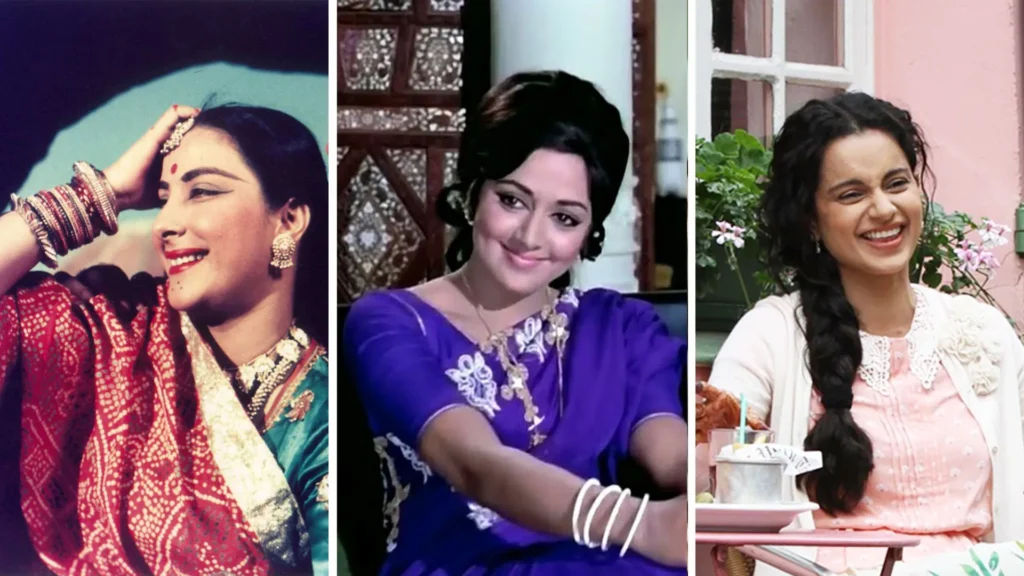The Role of Women in Indian Cinema: Then and Now
Indian cinema is a vibrant tapestry of stories, cultures, and languages, with Bollywood often taking center stage in global recognition. However, the influence of regional cinema on the broader Indian filmmaking landscape is profound and undeniable. From fostering unique narratives to showcasing diverse cultural identities, regional cinema has played a crucial role in shaping Indian cinema’s evolution and richness.
The Genesis of Regional Cinema in India
Early Beginnings
Silent Era:
The roots of regional cinema can be traced back to the silent era. Films were produced in various regions, reflecting local stories and cultural nuances. D.G. Phalke, the father of Indian cinema, not only pioneered Bollywood but also inspired regional filmmakers.
Language-Specific Films:
The first full-length Indian talkie, “Alam Ara” (1931), paved the way for sound films in various regional languages. This period saw the emergence of films in Bengali, Tamil, Telugu, Marathi, and other languages, catering to local audiences.

Key Regional Cinemas
Bengali Cinema:
Bengali cinema, with stalwarts like Satyajit Ray, Ritwik Ghatak, and Mrinal Sen, has been instrumental in garnering international acclaim. Ray’s “Apu Trilogy” is a landmark in world cinema, showcasing the power of regional storytelling.
Tamil and Telugu Cinema:
The South Indian film industry, particularly Tamil and Telugu cinema, has produced numerous blockbusters and stars like Rajinikanth and Kamal Haasan. These industries are known for their high production values and innovative narratives.
Marathi Cinema:
Marathi cinema, with filmmakers like V. Shantaram and more recently, Nagraj Manjule, has made significant contributions with socially relevant and critically acclaimed films like “Sairat.”
Malayalam Cinema:
Known for its realistic storytelling and strong narratives, Malayalam cinema has produced acclaimed filmmakers like Adoor Gopalakrishnan and Shaji N. Karun. Films like “Drishyam” and “Kumbalangi Nights” highlight its global reach.
Cultural and Linguistic Diversity
Reflecting Local Cultures
Cultural Identity:
Regional cinema reflects the cultural identity and traditions of its specific regions. From the vibrant dance forms in Tamil films to the lyrical storytelling in Bengali cinema, these films celebrate local heritage.
Language and Dialect:
Films in regional languages capture the essence of local dialects and idiomatic expressions, providing authenticity and a sense of belonging to the audience.
Socio-Political Narratives
Social Issues:
Regional films often address local social issues and political contexts. For instance, Marathi cinema has tackled topics like caste discrimination and farmers’ plight, resonating deeply with regional audiences.
Political Commentary:
Tamil and Malayalam films are known for their bold political commentaries, reflecting the socio-political climate of their regions and influencing public discourse.
Influence on Bollywood
Storytelling Techniques
Narrative Innovation:
Regional cinema’s storytelling techniques have influenced Bollywood’s narrative structures. The non-linear storytelling in films like “Memento” (inspired by the Tamil film “Ghajini”) is a testament to this influence.
Realism and Depth:
Films like “Queen” and “Barfi!” have drawn inspiration from the realistic and nuanced storytelling found in regional cinema, moving away from Bollywood’s traditional escapism.
Talent Crossover
Actors and Directors:
Many prominent Bollywood actors and directors have roots in regional cinema. Actors like Irrfan Khan and Vidya Balan started their careers in regional films, bringing their nuanced performances to Bollywood.
Music and Technical Expertise:
Music directors like A.R. Rahman, who began with Tamil cinema, have significantly influenced Bollywood music. Similarly, technical expertise from regional industries has enriched Bollywood productions.
The Digital Revolution and Regional Cinema
Rise of OTT Platforms
Global Reach:
The advent of digital platforms like Netflix, Amazon Prime, and Hotstar has given regional films a global audience. Movies like “Jallikattu” (Malayalam) and “Super Deluxe” (Tamil) have reached international viewers, showcasing the diversity of Indian cinema.
Content Diversity:
OTT platforms have democratized content, allowing regional films with unique stories and smaller budgets to compete on a level playing field with mainstream Bollywood productions.
Revival of Regional Films
Increased Production:
The digital revolution has led to an increase in the production of regional films. Filmmakers now have more opportunities to create content that resonates with local and global audiences.
Awards and Recognition:
Regional films have started gaining more recognition at national and international film festivals. This has boosted the morale of regional filmmakers and highlighted their contributions to Indian cinema.
Conclusion
The influence of regional cinema in Indian filmmaking is profound and multifaceted. It has enriched the Indian film industry with diverse stories, unique cultural perspectives, and innovative storytelling techniques. As digital platforms continue to bridge the gap between regional and mainstream cinema, the future promises an even more vibrant and inclusive cinematic landscape. Embracing the richness of regional cinema not only preserves India’s cultural heritage but also strengthens the foundation of its ever-evolving film industry.
